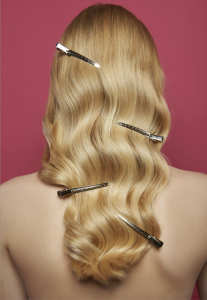CARDIFF, CARDIFF, WALES, June 1, 2024 /EINPresswire.com/ — Lazarou Hair, a premier hair salon chain in South Wales, is addressing the most common questions posed by clients regarding hair care. With a team of highly skilled professionals, Lazarou Hair provides valuable insights into topics such as hair growth, haircut frequency, choosing the right haircut for different face shapes, selecting suitable hair colours, and understanding the intricacies of hair extensions.
This comprehensive guide is designed to help clients make informed decisions about their hair care routines, ensuring they achieve and maintain their desired hair look with confidence.
”What hair type do I have?”
Understanding hair type is crucial for proper care and styling. Hair can be classified into four main types, each with its own unique characteristics and needs:
– Straight Hair: This hair type lacks natural curl and tends to be shiny due to the even distribution of natural oils from the scalp along the hair shaft. Straight hair can be fine, medium, or coarse and is typically the least prone to frizz. It often appears sleek but can sometimes look limp or greasy if not washed regularly. Lightweight hair products are recommended to avoid weighing down the hair.
– Wavy Hair: Wavy hair falls between straight and curly, with gentle, loose waves that can vary in intensity. It tends to have more body than straight hair and can be prone to frizz, especially in humid conditions. Wavy hair is usually classified into three categories: Type 2A (slight wave), Type 2B (more defined waves), and Type 2C (waves with some curl). Hair products that enhance natural wave patterns while controlling frizz are ideal for this hair type.
– Curly Hair: Curly hair has defined curls that range from loose loops to tight spirals. It is often more prone to dryness and frizz because natural oils have a harder time traveling down the hair shaft. Curly hair is typically classified into three categories: Type 3A (large, loose curls), Type 3B (medium, springy curls), and Type 3C (tight curls with more volume). Deep conditioning treatments and moisturising products are essential to maintain the health and definition of curly hair.
– Coily Hair: Also known as kinky or afro-textured hair, coily hair has tight, small curls or zig-zag patterns that are the most fragile and prone to breakage. This hair type often appears dense and voluminous but is actually quite delicate. It is classified into two categories: Type 4A (soft, well-defined coils), Type 4B (z-pattern curls), and Type 4C (tightest curl pattern with minimal definition). Coily hair benefits greatly from regular deep conditioning, moisturising treatments, and protective styling to reduce breakage and maintain moisture.
Each hair type has unique characteristics and requires different hair care routines and products to maintain health and style. For example, curly and coily hair benefit from deep conditioning and moisturising treatments to combat dryness and frizz, while straight hair may require lightweight products to avoid greasiness and maintain volume. Consulting with a professional hair stylist can help determine the exact hair type and the best hair care practices, ensuring that the hair remains healthy, manageable, and stylish.
”How quickly does hair grow?”
On average, hair grows about half an inch per month, equating to roughly six inches per year. This rate can be influenced by several factors, including genetics, age, health, and diet. For instance, younger individuals often experience faster hair growth compared to older adults. Additionally, maintaining a balanced diet rich in vitamins and minerals can promote healthy hair growth. Stress levels, hormonal changes, and certain medical conditions can also impact hair growth. Regular scalp massages and the use of hair growth treatments can further stimulate hair follicles and enhance growth rates.
”How often should you cut your hair?”
The frequency of haircuts depends on the hair type and the desired style. Generally, it is recommended to trim hair every 6-8 weeks to maintain health and prevent split ends. For shorter styles, more frequent cuts, such as every 4-6 weeks, may be necessary to keep the shape intact. Individuals with longer hair can extend the interval between cuts to about 10-12 weeks, especially if the hair is well-maintained and free of damage.
Regular trims help to keep the hair looking fresh and healthy by removing damaged ends and preventing breakage. Consulting with a stylist can help determine the optimal haircut schedule based on individual hair needs.
”How do I choose the right haircut for my face shape?”
Selecting a haircut that complements one’s face shape can enhance natural features and create a harmonious look. For instance:
– Oval faces are versatile and can pull off most styles, from short pixie cuts to long, layered looks.
– Round faces benefit from cuts that add length and angles, such as long layers or side-swept bangs, which help elongate the face.
– Square faces look great with soft, layered styles that soften strong jawlines, like wavy shags or shoulder-length cuts with layers.
– Heart-shaped faces are complemented by chin-length or longer styles that add width at the jawline, such as bobs with soft layers or long waves.
Understanding face shape helps in choosing haircuts that balance proportions and highlight the best features. A consultation with a hair stylist can provide personalised recommendations based on individual facial characteristics and hair texture.
”How does hair colour work?”
Hair colouring involves the use of chemicals to alter the natural pigment of the hair. Permanent hair colour requires opening the hair cuticle to deposit colour molecules deep within the hair shaft, providing long-lasting results. This process often involves ammonia or similar agents to lift the cuticle and peroxide to lighten the natural colour before applying the desired shade. Semi-permanent colour coats the hair shaft without penetrating deeply, allowing for a more temporary change that gradually washes out over several weeks.
Understanding the differences between permanent, semi-permanent, and temporary hair colour can help individuals choose the best option for their needs and lifestyle. Professional application ensures even colour distribution and reduces the risk of damage.
”What Hair Colour suits my skin tone?”
Choosing the right hair colour involves understanding skin undertones and how they interact with hair shades:
– Warm undertones pair well with rich, warm colours like golden blondes, honey, caramel, and auburn. These shades complement the natural warmth of the skin and create a cohesive look.
– Cool undertones are complemented by cooler shades like ash blonde, platinum, cool browns, and icy pastels. These colours contrast nicely with the skin’s cool tones, enhancing overall appearance.
– Neutral undertones can wear both warm and cool colours with ease, offering the flexibility to experiment with a wide range of hues. Shades like beige blonde, chocolate brown, and even bold colours like red or purple can be flattering.
Identifying the correct undertone can be done by examining the veins on the wrist (blue/purple indicates cool, green indicates warm) or considering which jewellery (silver or gold) looks best. Consulting with a professional hair colourist can provide personalised advice on choosing the most flattering hair colour.
”How do hair extensions work?”
Hair extensions are an excellent way to add length, volume, and even colour without altering natural hair. They can be applied using various methods, including:
– Tape-in Hair Extensions: These extensions use adhesive strips that are bonded to the natural hair. They are known for their quick application process and seamless look, making them a popular choice for those looking to add length and volume quickly. Tape-in extensions typically need to be moved up every 6-8 weeks as the natural hair grows.
– Weave/Weft Hair Extensions: Also known as sew-in extensions, these are sewn into braids of the natural hair. This method involves creating small, tight braids along the scalp and then sewing the weft of hair extensions into these braids. Weave/weft extensions are highly durable and can last for several weeks with proper maintenance.
– Micro/Nano Bond Hair Extensions: These extensions involve attaching small bundles of hair to the natural hair using tiny, discreet bonds. Micro bonds use small metal rings to secure the extensions, while nano bonds use even smaller rings, making them almost invisible. This method offers a highly natural look and allows for significant flexibility in styling. Micro/nano bond extensions typically require maintenance every 8-10 weeks to keep them looking their best.
Each method has its pros and cons, and the choice depends on factors like hair type, lifestyle, and desired outcome. Hair extensions require adequate maintenance to ensure longevity and avoid damage to the natural hair. Regular care, including gentle washing, sulphate free shampoo and conditioner, and avoiding excessive heat, helps maintain the quality of hair extensions.
About Lazarou Hair
Founded in 1966, Lazarou Hair is a family-owned salon chain with locations across Cardiff, including Duke Street, Churchill Way, Riverside, Birchgrove, Whitchurch, and Penarth. Renowned for its dedication to quality and customer satisfaction, Lazarou Hair continues to set the standard in hair care and styling. The salon’s rich history and long-standing presence in the community reflect its commitment to excellence and innovation. Lazarou Hair’s mission is to provide exceptional hair care services. Lazarou Hair offers personalised consultations to help clients choose the best haircuts, hair colours, treatments or hair extensions suited to their individual needs.
For more information, visit Lazarou’s website.
Head Office
Lazarou Hair Duke Street
[email protected]
Visit us on social media:
Instagram
Facebook
![]()
Originally published at https://www.einpresswire.com/article/716427985/expert-talk-hairdressers-responding-to-frequent-client-queries
The post Expert Talk: Hairdressers responding to frequent client queries first appeared on Beauty Ring Magazine.
Beauty - Beauty Ring Magazine originally published at Beauty - Beauty Ring Magazine





